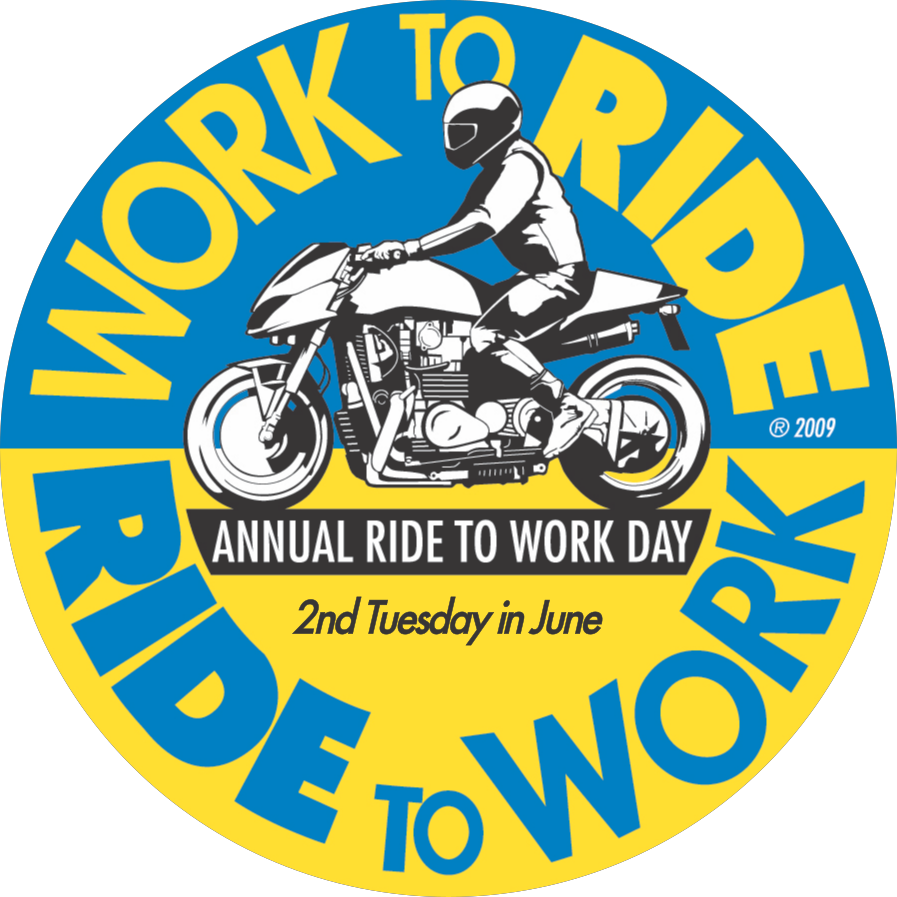From Rider July 2003
ROAD TALES
My favorite day of the year is coming up: RIDE TO WORK day is Wednesday, July 16, 2003, and I hope that there will be five million fewer cars on American roads on that date. I can list all the advantages of riding your motorcycle to the office or factory, from changing your dreary commute to a pleasure trip, being able to park right close to the entrance, bonding with your bike, dazzling your coworkers with the beauty of your machine, and, best of all, leaving your colleagues behind in the traffic jam when you all head for home.
I think the RIDE TO WORK concept is brilliant, sort of the motorcycle-riding commuter’s counterpoint to July 4th. On the 4th we get the day off and go ride the back roads, on the 16th we go to work but look forward to the commute on the front roads. If you get my drift. Why more motorcyclists don’t ride to work every day that the weather allows beats the stuffing out of me.
The entire population of these United States should support RIDE TO WORK, as it benefits the nation as a whole. Let me explain why. The other day I was sitting behind the steering wheel of The Wife’s pickup, driving up the Cuesta Grade on U.S. 101 at about 2 p.m. on a Tuesday afternoon, with my Suzuki DR650 strapped down in the back. Nothing wrong with the picture; I’d dropped the bike off for a full service a couple of days before, and had just picked it up. Along with a couple of cases of Merlot from the local discount wine shop. Trucks are useful.
Tuesday afternoon was a work day, and the grade was moderately busy, two lanes going uphill, two lanes going down, with lots of cars and trucks. And two motorcycles; one had just passed me splitting lanes, and another was coming toward me. I put less than a thousand miles a year on Sue’s truck, more than 30,000 on various motorcycles. Hew 3.9-liter V-6 Dodge Dakota averages about 18 mpg, in the real world, whereas my overall average mpg for all the bikes I ride is probably in the high 30s.
At the moment, I know where I was going — back to my office at home to work — I had no idea what everybody else was doing on the road. Why weren’t they in factories or air-conditioned cubicles? I turned on the radio, and some talk-show host was carrying on about cutting back on driving so we could cut back on oil imports. Then a caller came in with a notion about increasing taxes on gas-guzzlers — SUVs already pay a lot more taxes just paying for the gas they consume. A woman said she thought the DMV should base its annual registration charges on the rated consumption of a vehicle, which might make a lot of buyers think twice.
The next caller had an interesting notion: gas prices should become progressive. A driver would start out the year with a ration booklet having stamps for 1,000 gallons, at a buck a gallon, and if he went beyond that, he would have to pay a higher amount for another booklet with more stamps, at $2 a gallon. I wonder how Detroit, the automobile importers and the oil industry would like that. I can see a storm cloud of lobbying activity on the horizon.
I came over the top of the grade and headed up the Salinas Valley, the traffic moving at a steady 80 mph — everyone going somewhere. But that rationing idea, it got me thinking. Have to call it something else, ofcourse, since “rationing” has a somewhat negative connotation.
A couple of days later Joe Anastasio came over. He’s an engineer, and appears to be doing a competent job in keeping our local nuclear powerplant generating, and he has an architect wife, two young kids, three dogs and a cat. I brought up the subject of “road credits.” His is a high-mile family, and he calculated that the family minivan is driven about 20,000 miles a year, his pickup about 15,000, his aged Jaguar sedan about 10,000. Plus he and Becky each have a motorcycle, but since they are in the soccer-parenting phase of life, and father/son togetherness is currently achieved flying gliders, the bikes rarely see the road.
So the Anastasio family is knocking back 45.000 miles a year, at a guesstimate of 15 mpg. Three thousand gallons of refined petroleum product, the price of which seems to be going up every day. What if the federal government, trying to cut back on the deficit, decided to raise taxes on gas by a buck a gallon? Joe and Becky would be out three grand. Or using that coupon method, they get a thousand cheap gallons, the next thousand costs double, the third thousand, double again.
As a corollary, I believe we should tax vehicles according to their weight. Gasoline isn’t the only petroleum byproduct we deal with; how about asphalt, and the cost of road repair? I promise you, a thousand motorcycles with an average laden weight of 800 pounds, for a total of 800,000 pounds, do a whole heckuva lot less damage to the roadways than ten 80,000-pound trucks. Bikes can run day and night along U.S. 101 and never dent the tarmac, while a thousand big rigs moving through the Salinas River valley every 24 hours means that the authorities are going to have to plan for fixing, even replacing, the road at regular intervals.
We motorcyclists consume a lot less gas than the average sedan or pickup, and our light weight mans we have virtually no effect on roadbeds or bridges. We can park four bikes in a slot that will fit one car.
Maybe the DMV should think about having zero registration fees for motorcycles and actually promote their use. What a daring thought! Motorcycles are, unless grotesquely modified with excessively loud exhausts, environmentally friendly, as they use less petroleum by-product, and less space, than a car. Ride yours to work, and tell your riding buddies to do the same.
Remember: July 16 is RIDE TO WORK day! Would it not be nice to see this as a nationally sponsored day, backed by the federal government? Write to your reps in Washington, or at the very least pay a visit to www.ridetowork.org.

